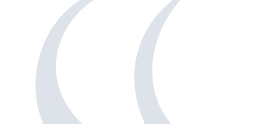Abstract bekijken
Deze abstract is toegekend aan sessie AOB Free Papers
| Type presentatie | Oral presentation |
| Titel | Peripapillary intrachoroidal cavitation and deep structures at peripapillary poles |
| Doel | To compare deep structures at peripapillary poles when a peripapillary intrachoroidal cavitation (PC) coexists with tilted disc (TD) and peripapillary staphyloma (PS) versus when only TD and PS coexist. |
| Methodes | It’s a cross-sectional observational study. Radial and linear scans centered on the optic nerve head are performed with OCT. Eyes are classified according to the presence of TD, PS and PC. The posterior choroidal wall is analyzed from the peripapillary area to the Bruch’s membrane opening. Three choroidal configurations are analyzed on the γ-zone side: regular convexity, loss of convexity and triangular deformation. Discontinuity of the border tissue below Bruch's membrane (BT) and suprachoroidal detachment are also looked for. |
| Resultaten | 334 patients are enrolled. Choroidal triangular deformation is observed in 86,1% of eyes with PC, in 21,4% of eyes combining PS and TD without PC and in 4,7% of eyes affected either by PS or by TD. This configuration is statistically more frequent in eyes with PC as compared to those combining PS and TD without PC (Chi2 test, p<0,01). Suprachoroidal detachment and BT discontinuity are only seen in eyes with PC (Fisher's test, p<0,001). |
| Conclusie | The statistical correlation between PC and the choroidal triangular deformation on the one hand and BT discontinuity on the other hand, suggests the role of mechanical factors in the etiology of PC. The progressive choroidal deformation, from regular convexity to triangular configuration, is rarely seen without the PS-TD combination. It suggests that stresses causing these deformations are applied when TD and PS coexist. Suprachoroidal detachment, only seen in case of PC, could be a diagnostic criterion for PC. |
| Belangenverstrengeling | Nee |
Auteur 1
| Naam | BACQ |
| Initialen | N |
| Instituut | Hôpital Erasme |
| Stad | Brussels |
Auteur 2
| Naam | DUGAUGUIER |
| Initialen | A |
| Instituut | Hôpital Erasme |
| Stad | Brussels |
Auteur 3
| Naam | KISMA |
| Initialen | N |
| Instituut | Hôpital Erasme |
| Stad | Brussels |
Auteur 4
| Naam | ALAOUI |
| Initialen | Y |
| Instituut | Hôpital Erasme |
| Stad | Brussels |
Auteur 5
| Naam | COPPENS |
| Initialen | K |
| Instituut | Hôpital Erasme |
| Stad | Brussels |
Auteur 6
| Naam | LEROY |
| Initialen | K |
| Instituut | Laboratoire de neuro-anatomie, ULB |
| Stad | Brussels |
Auteur 7
| Naam | BREMER |
| Initialen | F |
| Instituut | Hôpital Erasme |
| Stad | Brussels |
Auteur 8
| Naam | EHONGO |
| Initialen | A |
| Instituut | Hôpital Erasme |
| Stad | Brussels |

